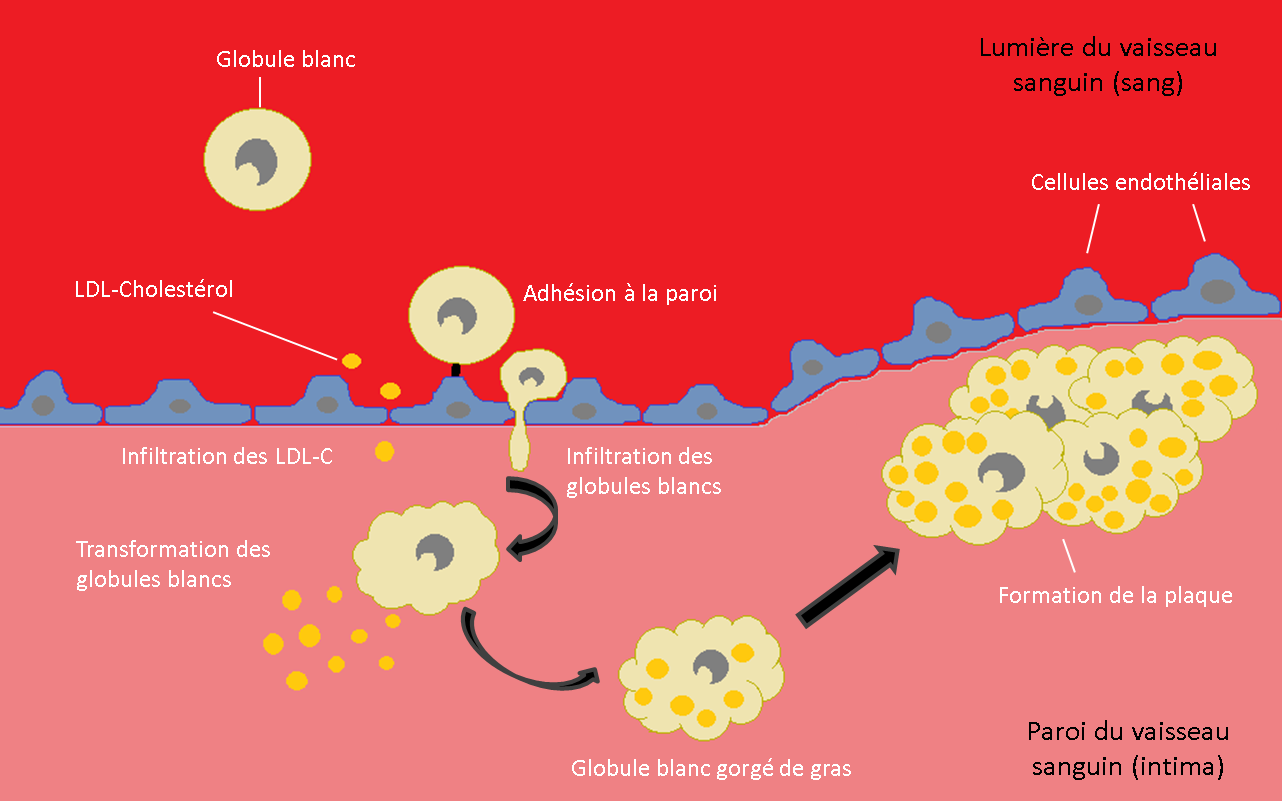Inflammation
Inflammation is the first line of immune defense when the body encounters an attack such as a viral or bacterial infection, an injury or an allergy. It involves immune cells, better known as white blood cells. The resulting physiological reaction (normal reaction of the body) appears as redness, swelling, heat, pain, or even an alteration of the proper functioning of the affected organ.
In the case of atherosclerosis, the entry of LDL cholesterol particles into the artery walls of the heart acts as an aggressor and causes a physical inflammatory reaction (see figure). The white blood cells then pass through the arterial wall to absorb the LDL cholesterol particles in order to clean it. Once loaded with cholesterol, the white blood cells accumulate and form plaque. They then release pro-inflammatory substances that increase the permeability of the arterial wall, allowing the entry of new LDL cholesterol particles and white blood cells. A vicious circle thus begins, which promotes the thickening of the plaque. The greater the aggression of LDL, the greater the plaque and the more damage it can cause.
Diagram of atherosclerotic plaque formation

